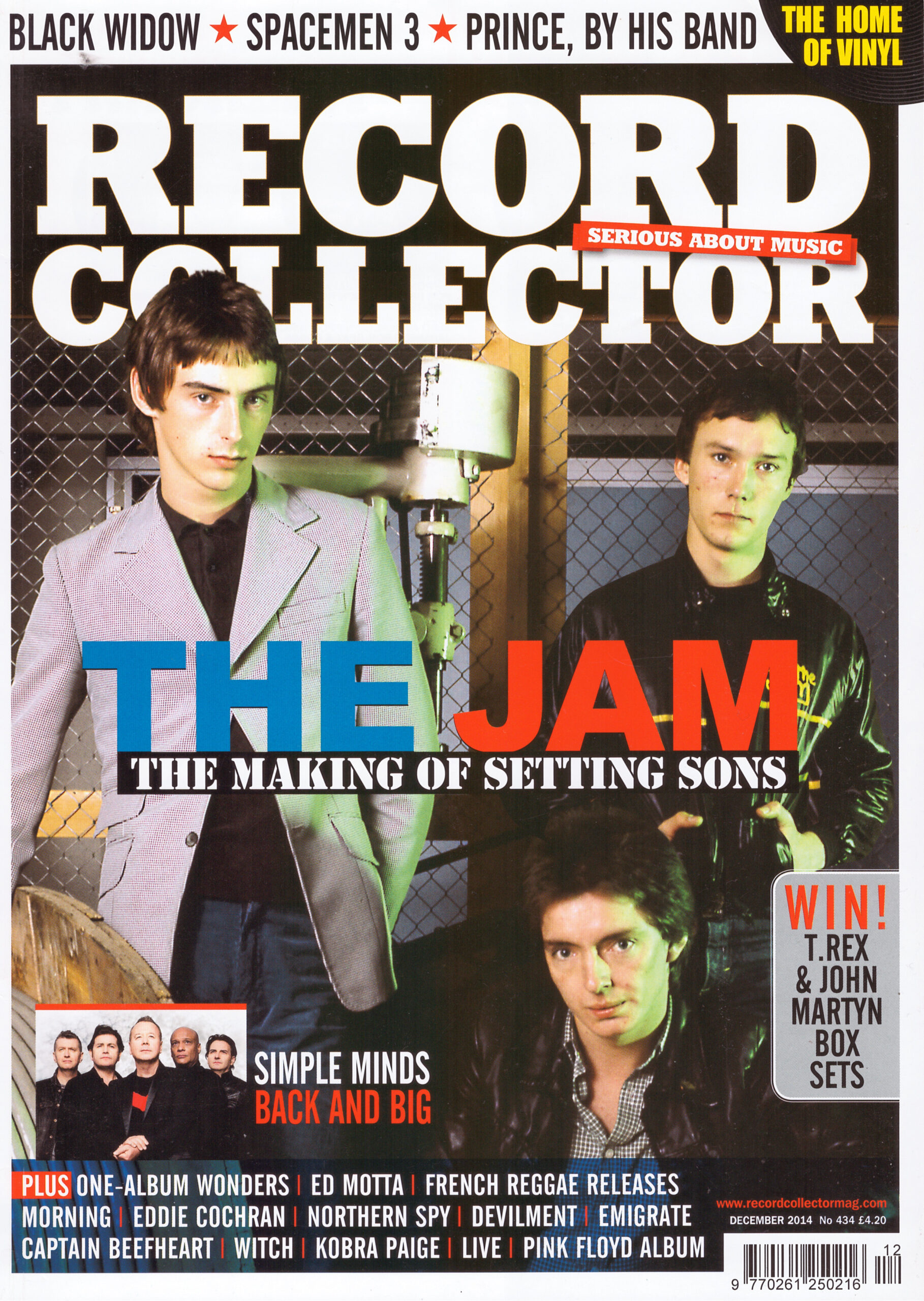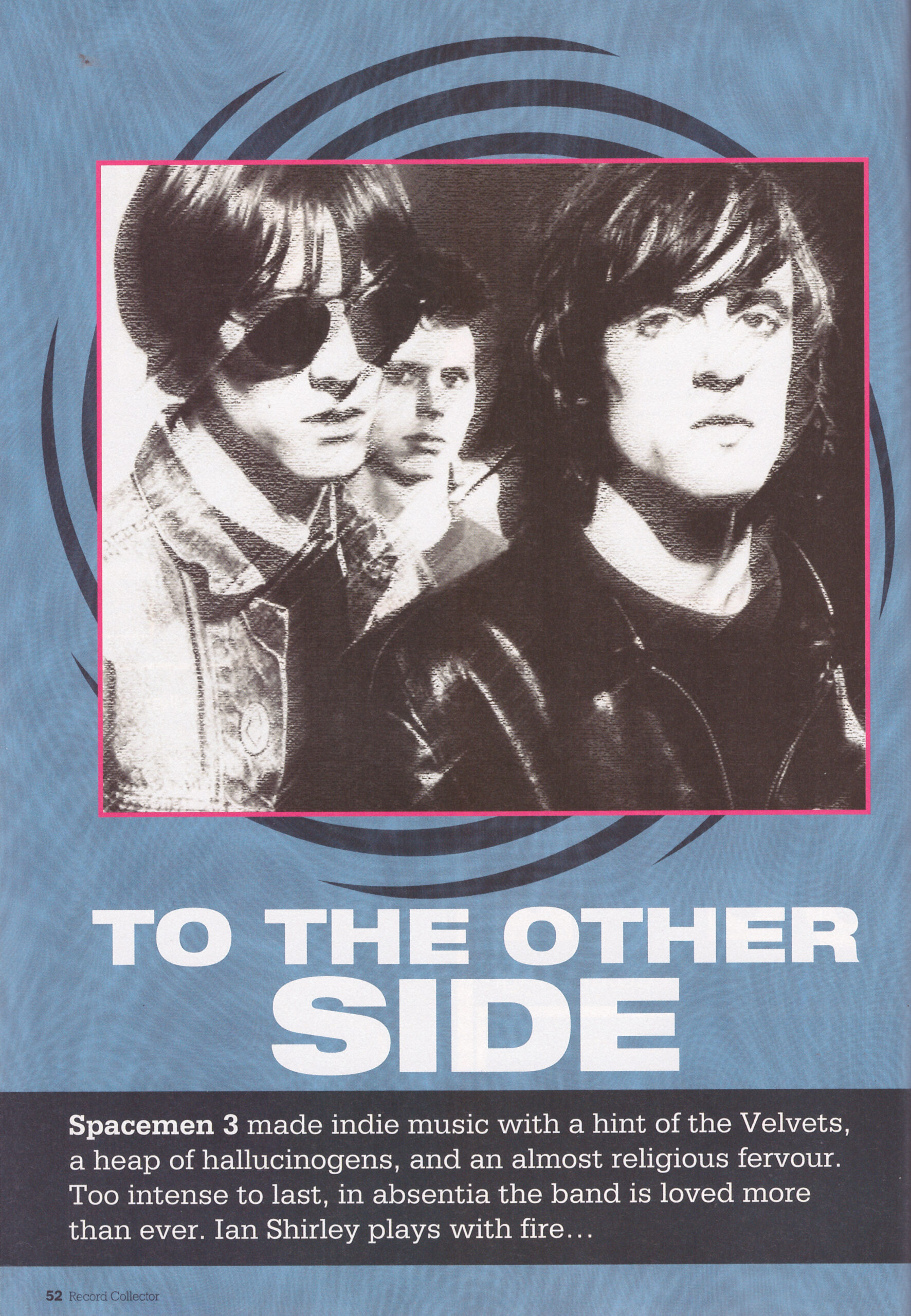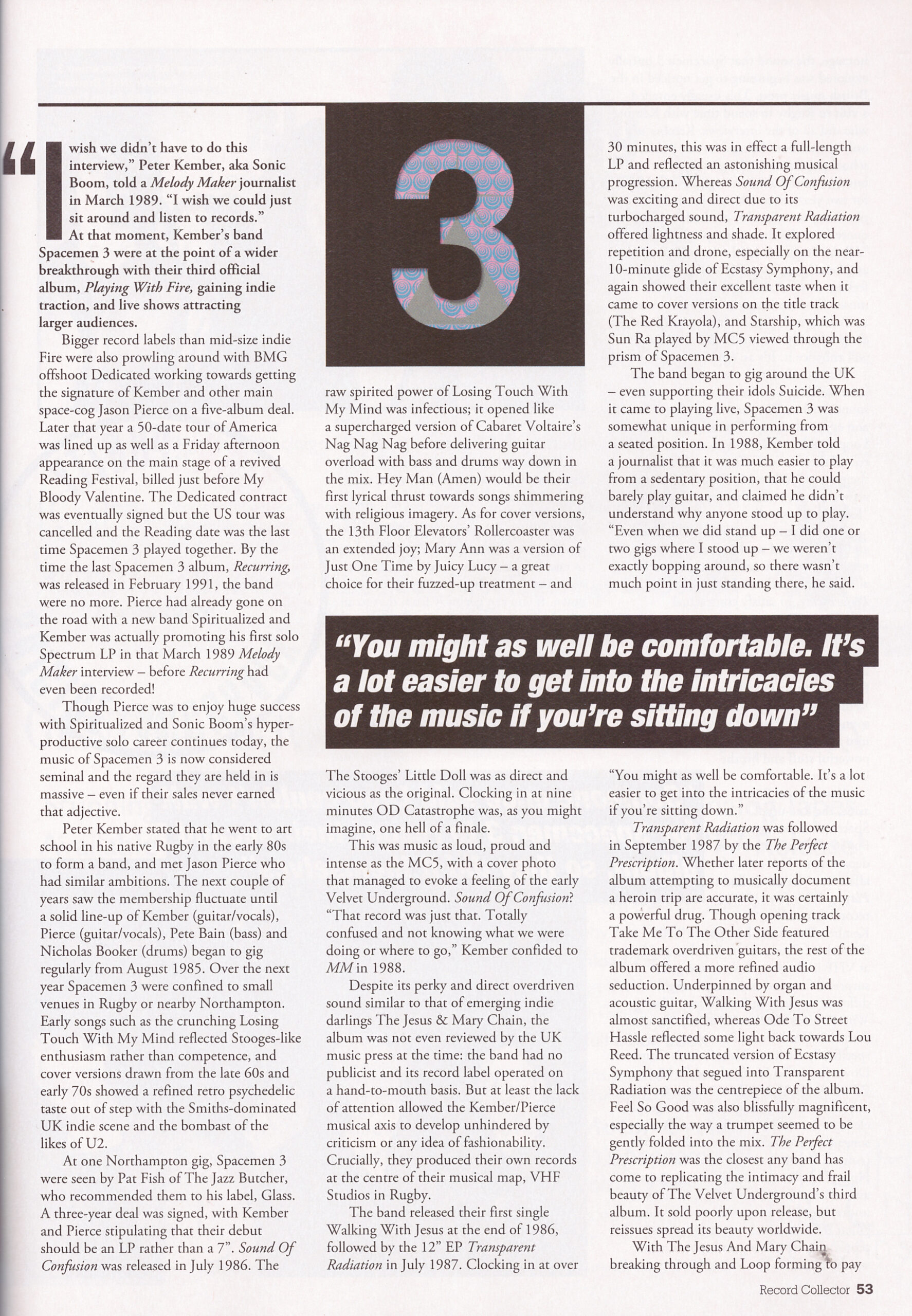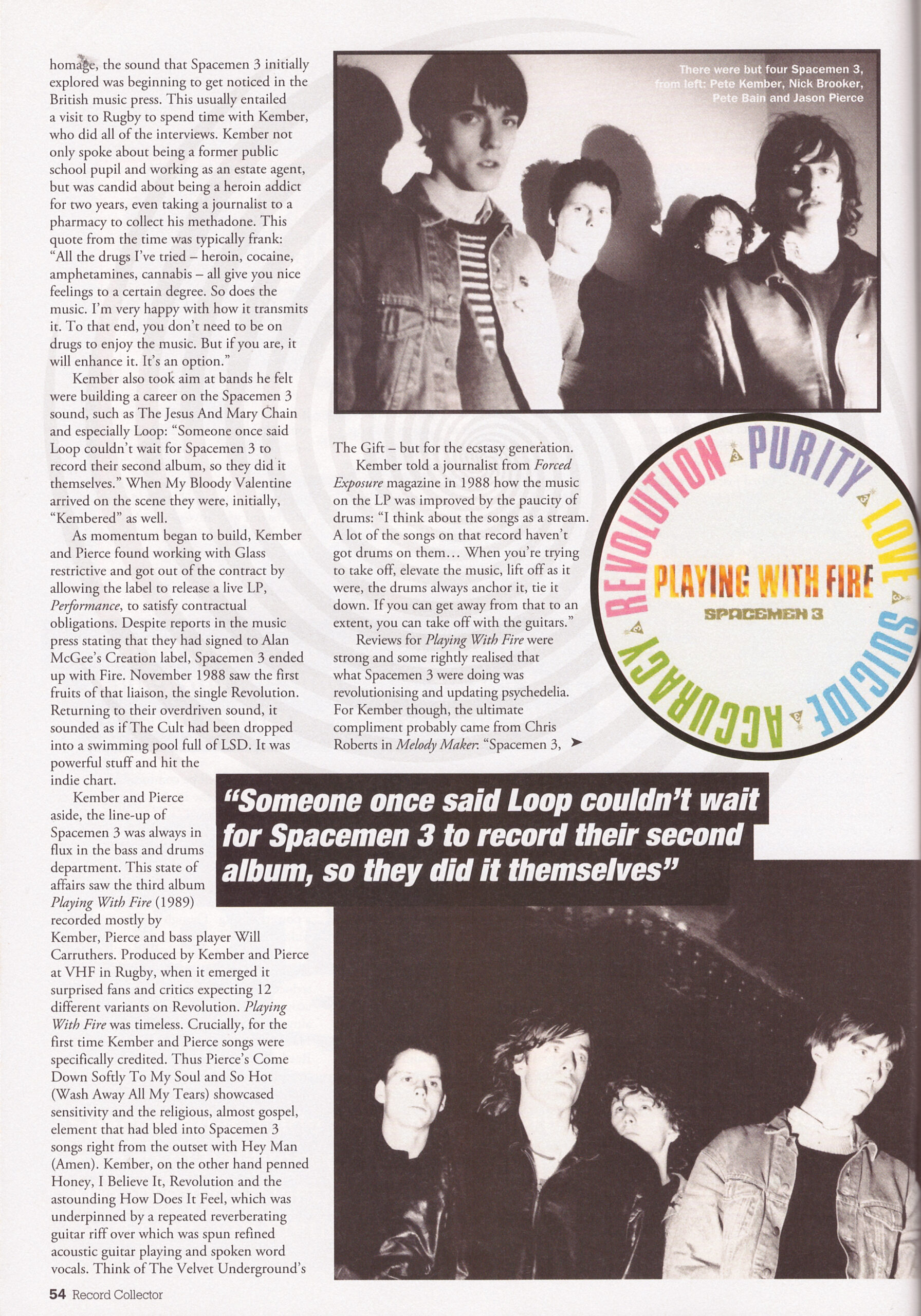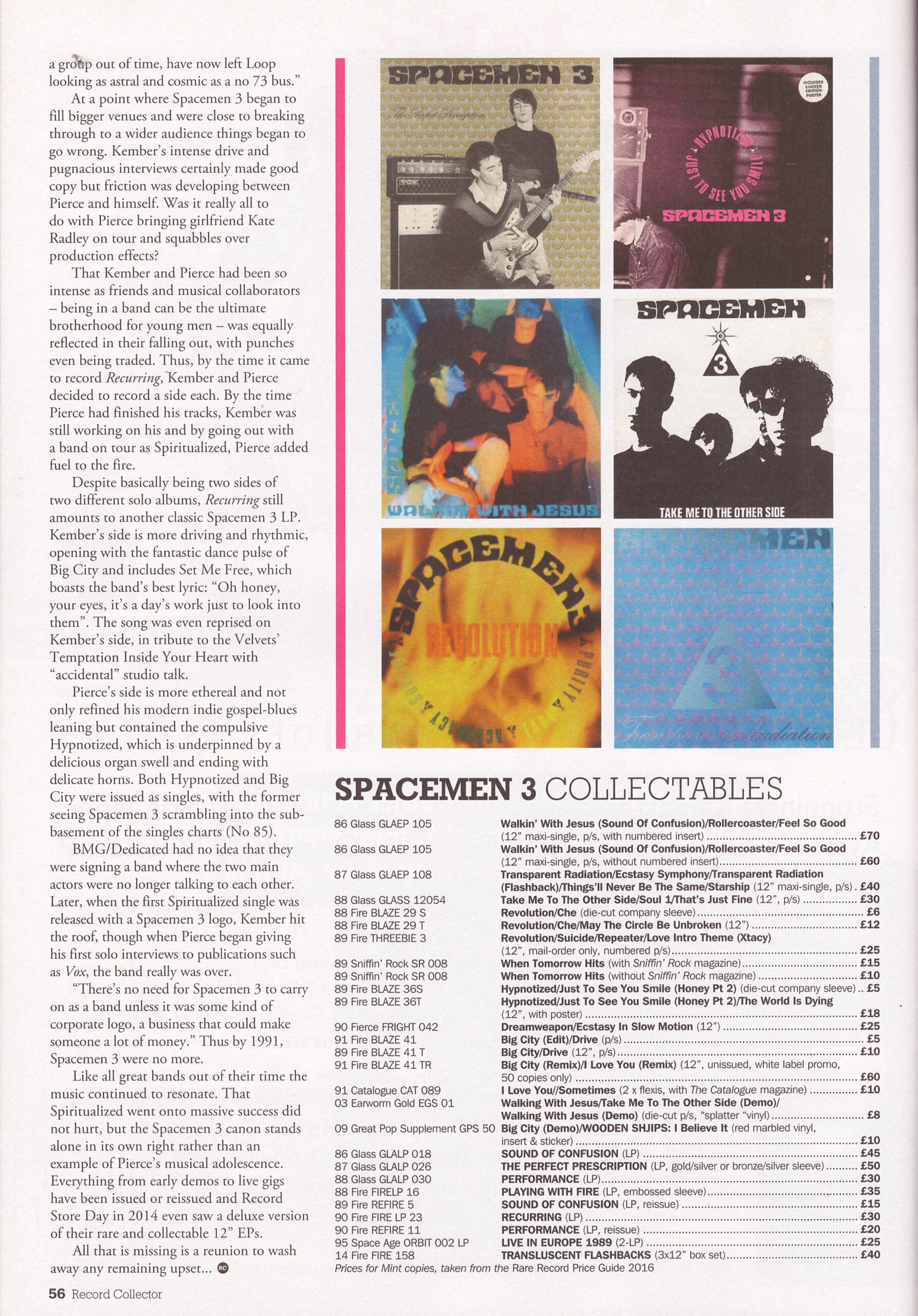To The Other Side
Spacemen 3 made indie music with a hint of the Velvets, a heap of hallucinogens, and an almost religious fervour. Too intense to last, in absentia the band is loved more than ever. Ian Shirley plays with fire…
“I wish we didn’t have to do this interview,” Peter Kember, aka Sonic Boom, told a Melody Maker journalist in March 1989. “I wish we could just sit around and listen to records.” At that moment, Kember’s band Spacemen 3 were at the point of a wider breakthrough with their third official album, Playing With Fire, gaining indie traction, and live shows attracting larger audiences.
Bigger record labels than mid-size indie Fire were also prowling around with BMG offshoot Dedicated working towards getting the signature of Kember and other main space-cog Jason Pierce on a five-album deal. Later that year a 50-date tour of America was lined up as well as a Friday afternoon appearance on the main stage of a revived Reading Festival, billed just before My Bloody Valentine. The Dedicated contract was eventually signed but the US tour was cancelled and the Reading date was the last time Spacemen 3 played together. By the time the last Spacemen 3 album, Recurring, was released in February 1991, the band were no more. Pierce had already gone on the road with a new band Spiritualized and Kember was actually promoting his first solo Spectrum LP in that March 1989 Melody Maker interview – before Recurring had even been recorded!
Though Pierce was to enjoy huge success with Spiritualized and Sonic Boom’s hyper-productive solo career continues today, the music of Spacemen 3 is now considered seminal and the regard they are held in is massive – even if their sales never earned that adjective.
Peter Kember stated that he went to art school in his native Rugby in the early 80s to form a band, and met Jason Pierce who had similar ambitions. The next couple of years saw the membership fluctuate until a solid line-up of Kember (guitar/vocals), Pierce (guitar/vocals), Pete Bain (bass) and Nicholas Booker (drums) began to gig regularly from August 1985. Over the next year Spacemen 3 were confined to small venues in Rugby or nearby Northampton. Early songs such as the crunching Losing Touch With My Mind reflected Stooges-like enthusiasm rather than competence, and cover versions drawn from the late 60s and early 70s shows a refined retro psychedelic taste out of step with the Smiths-dominated UK indie scene and the bombast of the likes of U2.
At one Northampton gig, Spacemen 3 were seen by Pat Fish of The Jazz Butcher, who recommended them to his label, Glass. A three-year deal was signed, with Kember and Pierce stipulating that their debut should be an LP rather than a 7”. Sound Of Confusion was released in July 1986. The raw spirited power of Losing Touch With My Mind was infectious; it opened like a supercharged version of Cabaret Voltaire’s Nag Nag Nag before delivering guitar overload with bass and drums way down in the mix. Hey Man (Amen) would be their first lyrical thrust towards songs shimmering with religious imagery. As for cover versions, the 13th Floor Elevators’ Rollercoaster was an extended joy; Mary Ann was a version of Just One Time by Juicy Lucy – a great choice for their fuzzed-up treatment – and The Stooges’ Little Doll was as direct and vicious as the original. Clocking in at nine minutes OD Catastrophe was, as you might imagine, one hell of a finale.
This was music as loud, proud and intense as the MC5, with a cover photo that managed to evoke a feeling of the early Velvet Underground. Sound Of Confusion? “That record was just that. Totally confused and not knowing what we were doing or where to go,” Kember confided to MM in 1988.
Despite its perky and direct overdriven sound similar to that of emerging indie darlings The Jesus & Mary Chain, the album was not even reviewed by the UK music press at the time: the band had no publicist and its record label operated on a hand-to-mouth basis. But at least the lack of attention allowed the Kember/Pierce musical axis to develop unhindered by criticism or any ida of fashionability. Crucially, they produced their won records at the centre of their musical map, VHF Studios in Rugby.
The band released their first single Walking With Jesus at the end of 1986, followed by the 12” EP Transparent Radiation in July 1987. Clocking in at over 30 minutes, this was in effect a full-length LP and reflected an astonishing musical progression. Whereas Sound Of Confusion was exciting and direct due to its turbocharged sound, Transparent Radiation offered lightness and shade. It explored repetition and drone, especially on the near-10-minute glide of Ecstasy Symphony, and again showed their excellent taste when it came to cover versions on the title track (The Red Krayola), and Starship, which was Sun Ra played by MC5 viewed through the prism of Spacemen 3.
The band began to gig around the UK – even supporting their idols Suicide. When it came to playing live, Spacemen 3 was somewhat unique in performing from a seated position. In 1988, Kember told a journalist that it was much easier to play from a sedentary position, that he could barely play a guitar, and claimed he didn’t understand why anyone stood up to play. “Even when we did stand up – I did one or two gigs where I stood up – we weren’t exactly bopping around, so there wasn’t much point in just standing there,” he said. “You might as well be comfortable. It’s a lot easier to get into the intricacies of the music if you’re sitting down.”
Transparent Radiation was followed in September 1987 by the LP The Perfect Prescription. Whether later reports of the album attempting to musically document a heroin trip are accurate, it was certainly a powerful drug. Though opening track Take Me To The Other Side featured trademark overdriven guitars, the rest of the album offered a more refined audio seduction. Underpinned by organ and acoustic guitar, Walking With Jesus was almost sanctified, whereas Ode To Street Hassle reflected some light back towards Lou Reed. The truncated version of Ecstasy Symphony that segued into Transparent Radiation was the centrepiece of the album. Feel So Good was also blissfully magnificent, especially the way a trumpet seemed to be gently folded into the mix. The Perfect Prescription was the closest any band has come to replicating the intimacy and frail beauty of The Velvet Underground’s third album. It sold poorly upon release, but reissues spread its beauty worldwide.
With The Jesus And Mary Chain breaking through and Loop forming to pay homage, the sound that Spacemen 3 initially explored was beginning to get noticed in the British music press. This usually entailed a visit to Rugby to spend time with Kember, who did all of the interviews. Kember not only spoke about being a former public school pupil and working as an estate agent, but was candid about being a heroin addict for two years, even taking a journalist to a pharmacy to collect his methadone. This quote from the time was typically frank: “All the drugs I’ve tried – heroin, cocaine, amphetamines, cannabis – all give you nice feelings to a certain degree. So does the music. I’m very happy with how it transmits it. To that end, you don’t need to be on drugs to enjoy the music. But if you are, it will enhance it. It’s an option.”
Kember also took aim at bands he felt were building a career on the Spacemen 3 sound, such as The Jesus And Mary Chain and especially Loop: “Someone once said Loop couldn’t wait for Spacemen 3 to record their second album, so they did it themselves.” When My Bloody Valentine arrived on the scene they were, initially, “Kembered” as well.
As momentum began to build, Kember and Pierce found working with Glass restrictive and got out of the contract by allowing the label to release a live LP, Performance, to satisfy contractual obligations. Despite reports in the music press stating that they had signed to Alan McGee’s Creation label, Spacemen 3 ended up with Fire. November 1988 saw the first fruits of that liaison, the single Revolution. Returning to their overdriven sound, it sounded as if The Cult had been dropped into a swimming pool full of LSD. It was powerful stuff and hit the indie chart.
Kember and Pierce aside, the line-up of Spacemen 3 was always in flux in the bass and drums department. This state of affairs saw the third album Playing With Fire (1989) recorded mostly by Kember, Pierce and bass played Will Carruthers. Produced by Kember and Pierce at VHF in Rugby, when it emerged it surprised fans and critics expecting 12 different variants on Revolution. Playing With Fire was timeless. Crucially, for the first time Kember and Pierce songs were specifically credited. Thus Pierce’s Come Down Softly To My Soul and So Hot (Wash Away All My Tears) showcased sensitivity and the religious, almost gospel, element that had bled into Spacemen 3 songs right from the outset with Hey Man (Amen). Kember, on the other hand penned Honey, I Believe It, Revolution and the astounding How Does It Feel, which was underpinned by a repeated reverberating guitar riff over which was spun refined acoustic guitar playing and spoken word vocals. Think of The Velvet Underground’s The Gift – but for the ecstasy generation.
Kember told a journalist from Forced Exposure magazine in 1988 how the music on the LP was improved by the paucity of drums: “I think about the songs as a stream. A lot of the songs on that record haven’t got drums on them… When you’re trying to take off, elevate the music, lift off as it were, the drums always anchor it, tie it down. If you can get away from that to an extent, you can take off with the guitars.”
Reviews for Playing With Fire were strong and some rightly realised that what Spacemen 3 were doing was revolutionising and updating psychedelia. For Kember though, the ultimate compliment probably came from Chris Roberts in Melody Maker: “Spacemen 3, a group out of time, have now left Loop looking as astral and cosmic as a no 73 bus.”
At a point where Spacemen 3 began to fill bigger venues and were close to breaking though to a wider audience things began to go wrong. Kember’s intense drive and pugnacious interviews certainly made good copy but friction was developing between Pierce and himself. Was it really all to do with Pierce bringing girlfriend Kate Radley on tour and squabbles over production effects?
That Kember and Pierce had been so intense as friends and musical collaborators – being in a band can be the ultimate brotherhood for young men – was equally reflected in their falling out, with punches even being traded. Thus, by the time it came to record Recurring, Kember and Pierce decided to record a side each. By the time Pierce had finished his tracks, Kember was still working on his and by going out with a band on tour as Spiritualized, Pierce added fuel to the fire.
Despite basically being two sides of two different solo albums, Recurring still amounts to another classic Spacemen 3 LP. Kember’s side is more driving and rhythmic, opening with the fantastic dance pulse of Big City and includes Set Me Free, which boasts the band’s best lyric: “Oh honey, your eyes, it’s a day’s work just to look into them”. The song was even reprised on Kember’s side, in tribute to the Velvets’ Temptation Inside Your Heart with “accidental” studio talk.
Pierce’s side is more ethereal and not only refined his modern indie gospel-blues leaning but contained the compulsive Hypnotized, which is underpinned by a delicious organ swell and ending with delicate horns. Both Hypnotized and Big City were issued as singles, with the former seeing Spacemen 3 scrambling into the sub-basement of the singles charts (No 85).
BMG/Dedicated had no idea that they were signing a band where the two main actors were no longer talking to each other. Later, when the first Spiritualized single was released with a Spacemen 3 logo, Kember hit the roof, though when Pierce began giving his first solo interviews to publications such as Vox, the band really was over.
“There’s no need for Spacemen 3 to carry on as a band unless it was some kind of corporate logo, a business that could make someone a lot of money.” Thus by 1991, Spacemen 3 were no more.
Like all great bands out of their time the music continued to resonate. That Spiritualized went onto massive success did not hurt, but the Spacemen 3 canon stands alone in its own right rather than an example of Pierce’s musical adolescence. Everything from early demos to live gigs have been issued or reissued and Record Store Day 2014 even say a deluxe version of their rare and collectable 12” EPs.
All that is missing is a reunion to wash away any remaining upset…
